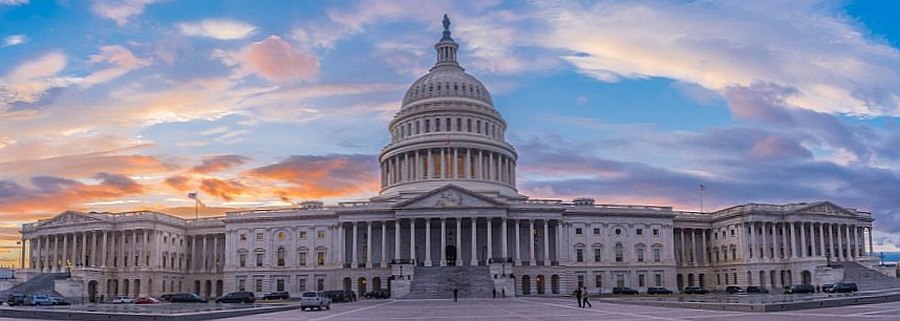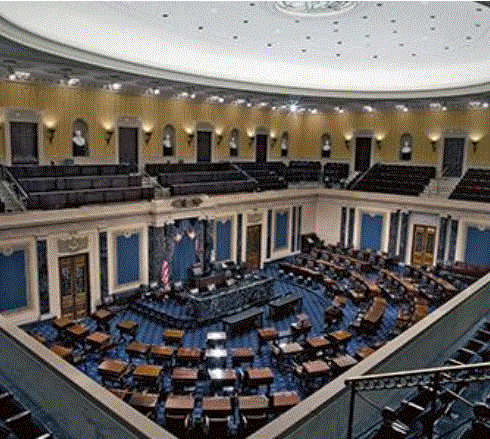|
| |
|
United States Capitol |
| Through legislative debate and compromise, the U.S. Congress makes laws that influence our daily lives. It holds hearings to inform the legislative process, conducts investigations to oversee the executive branch, and serves as the voice of the people and the states in the federal government. |
 |
| |
What Congress Does |
Congress is the legislative branch of the federal government that represents the American people and makes the nation's laws. It shares power with the executive branch, led by the president, and the judicial branch, whose highest body is the Supreme Court of the United States. Of the three branches of government, Congress is the only one elected directly by the people.
Article I—the longest article of the Constitution—describes congressional powers. Congress has the power to: |
-
Make laws
-
Declare war
-
Raise and provide public money and oversee its proper expenditure
-
Impeach and try federal officers
-
Approve presidential appointments
-
Approve treaties negotiated by the executive branch
-
Oversight and investigations
|
|
| |
 |
| |
 |
The U.S. House of Representatives
The U.S. House of Representatives shall be composed of Members chosen every second Year by the People of the several States, and the Electors in each State shall have the Qualifications requisite for Electors of the most numerous Branch of the State Legislature.
—The Constitution, Article 1, Section 2
The House is the larger of Congress’s two legislative bodies. Its membership is based on the population of each individual state. By law, its current membership is set at 435 Representatives, plus nonvoting delegates from the District of Columbia and the U.S. territories. The House possesses the sole authority to impeach federal officials and, in the case of indecisive Electoral College results, to elect a president. |
|
| |
|
 |
United States Senate
The Senate of the United States shall be composed of two Senators from each state, elected by the people thereof, for six years; and each Senator shall have one vote.
— The Constitution, Article 1, Section 3 (as amended)
In the United States Senate all states are represented equally regardless of size or population. Unlike the House of Representatives, where all members must stand for election every two years, only one-third of the Senate’s seats are filled with each general election. Longer, overlapping Senate terms provide Congress with stability and continuity, and lessen the immediate pressure of public opinion on members of the Senate. |
|
|
|
| |
|
|
| The U.S. Capitol Visitor Center is the newest addition to this historic complex. At nearly 580,000 square feet, the Visitor Center is the largest project in the Capitol's more than two-century history and is approximately three quarters the size of the Capitol itself. The entire facility is located underground on the east side of the Capitol so as not to detract from the appearance of the Capitol and the grounds designed by Frederick Law Olmsted in 1874. |
|
 |
| |
|
|
|